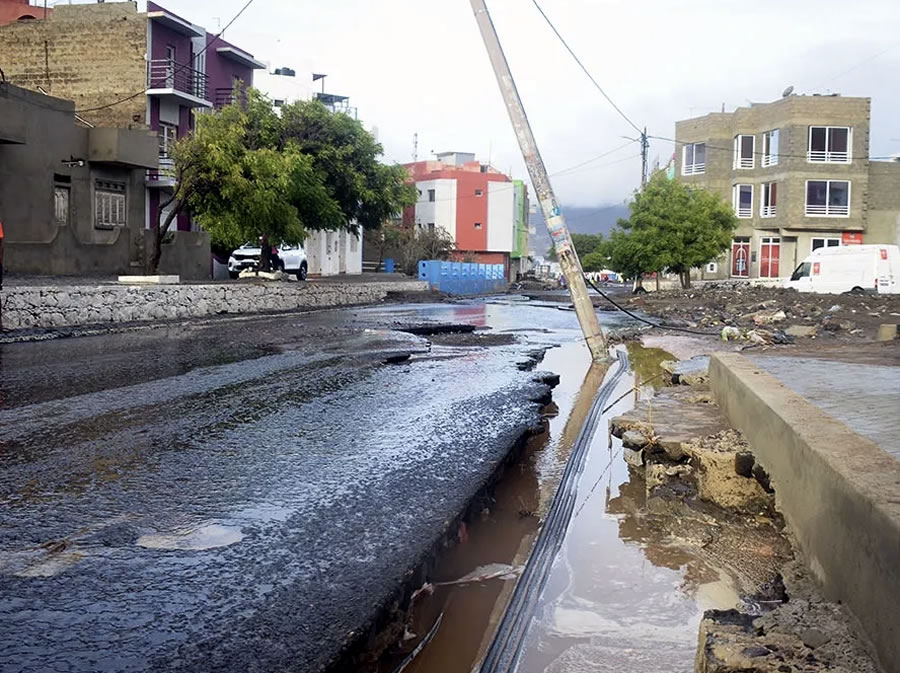
The recent history of the island of St. Vincent in Cape Verde already has a tragic date that will be hard to forget. In just a few hours, torrential rains washed away homes, vehicles and roads, leaving a provisional death toll of six and a community stricken by loss and devastation. Beyond the natural disaster, the tragedy exposed the fragility of infrastructure unable to respond to increasingly extreme weather events.
Kimzé Brito, a prominent Cape Verdean journalist, has published a reflection that goes beyond the chronicle of the events. In it, he analyses the root causes of the catastrophe and proposes measures to ensure that reconstruction is not simply a return to vulnerability, but a real commitment to the resilience and security of the population. Below, we reproduce his article in its entirety, translated into Spanish.
St Vincent: Time to nip evil in the bud
The early morning of 11 August will go down in the recent history of St Vincent as one of the most tragic moments the island has ever experienced. Torrential rains, falling in just a few hours, washed away everything in their path: houses, cars, roads and, tragically, human lives. It was the brute force of nature showing, once again, that urban vulnerability costs dearly and, all too often, costs lives. This tragedy is not only a result of the intensity of the rainfall. It is also the consequence of insufficient urban planning, fragile infrastructure and drainage systems unable to cope with extreme weather events. With climate change making events like this more frequent and unpredictable, the question is simple: are we going to rebuild to repeat the mistake or are we going to rebuild to resist?
Structural solutions: nipping the evil in the bud
No single measure will be foolproof, but some can significantly reduce the impact of extreme events:
-
Modern storm drainage system
- Underground networks capable of rapidly evacuating large volumes of water, with channels, drains and retention basins.
- Regular maintenance and cleaning of storm drains, avoiding clogs that aggravate flooding. -
Urban redevelopment and risk zone management
- Mapping of flood-prone areas and progressive de-occupation of the most critical areas.
- Prohibition of new construction in natural water run-off corridors. -
Containment and retention works
- Retaining walls and reinforced slopes on vulnerable slopes.
- Retention basins and diversion channels to slow the flow of water before it reaches inhabited areas. -
Warning systems and community education
- Installation of weather sensors and rain gauges to provide rapid warnings to the population.
- Awareness-raising campaigns on safety, evacuation and prevention in extreme rainfall situations.
Forward-looking reconstruction
Reconstruction cannot simply replace what was there before. It is necessary to transform this tragedy into a historic opportunity to redesign the city in a safe and sustainable way. The city council, the government, engineers, urban planners, universities and the population must join forces and plan the city for the coming decades, based on science, engineering and citizen participation.
Conclusion: a commitment to life
Mother Nature is not to be trifled with. But with intelligence, planning and political will we can transform vulnerability into resilience.
At this difficult hour, I express my deepest sympathy to the families who have lost loved ones. I deeply regret the lives lost in this fateful early morning. May the memory of these victims be honoured with firm and responsible action, so that this tragedy becomes a milestone in the building of a safer, fairer and more prepared St Vincent.
Source: mindelinsite.com
